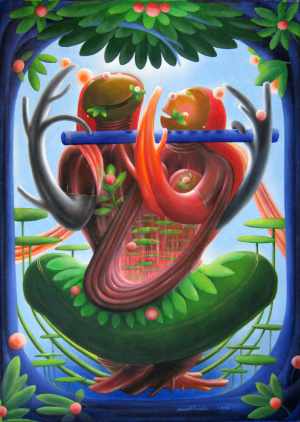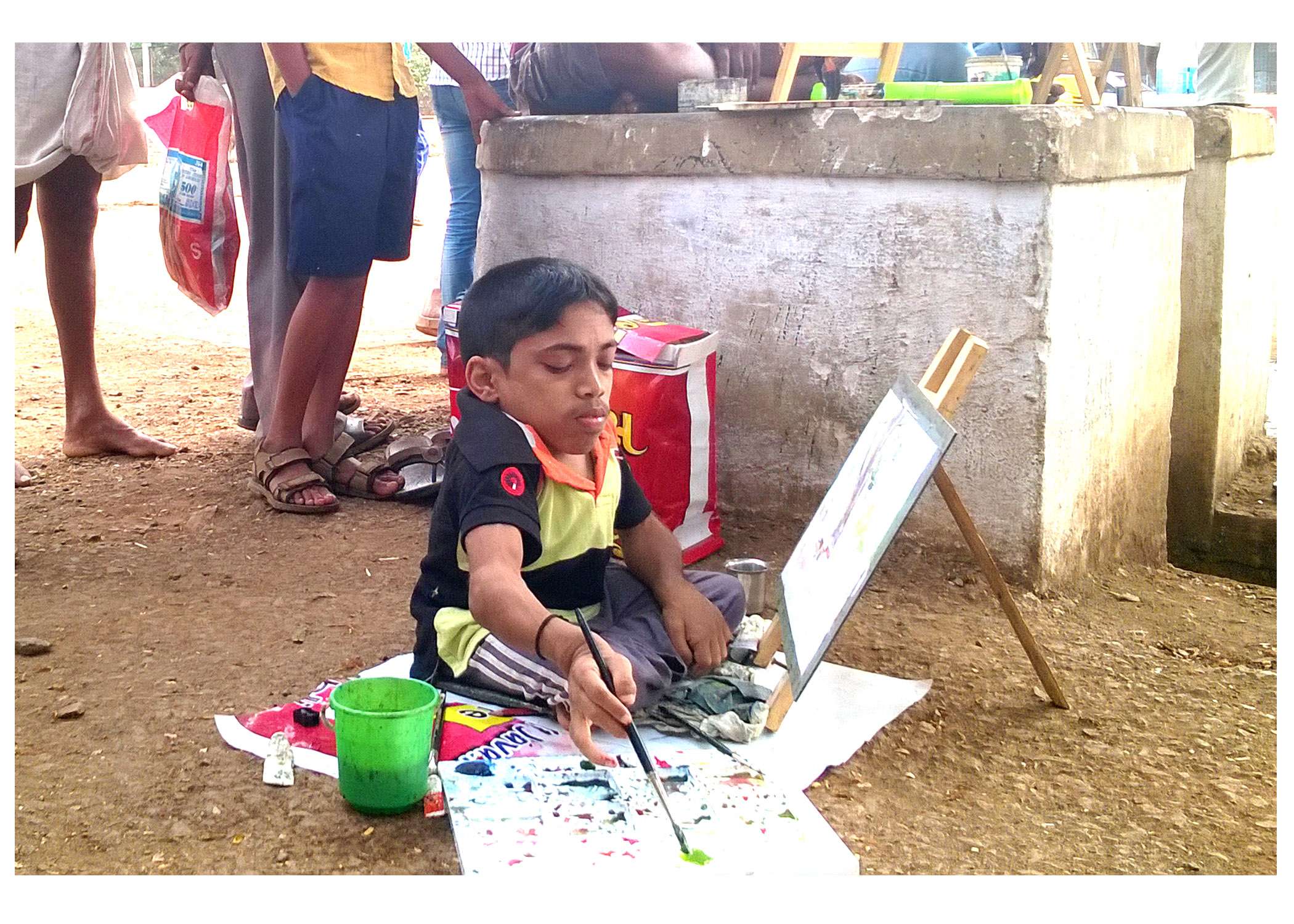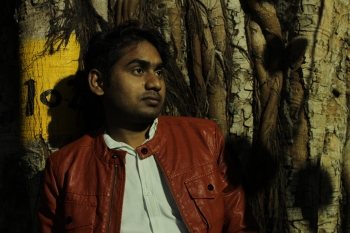
Blending pigments on the oil base of varying thickness itself is surprising to the ears. Frequent questions like oil and paint? how will it work? using oil will destroy the painting, why to spend on such painting etc. keep stroking our minds and then, at last, we decide to drop the idea of buying oil paintings.
But our art masters are experts in sprinkling oil of magic of their imagination with a guarantee of everlasting adhesiveness. Yes, oil paintings are the most recent and upcoming trend in the art industry. And guess what, we keep our promise of providing the best from the trend.
Now let us explore the depths of oil painting.
1. What is an oil painting?
Oil painting is a mixture of three things: pigment, binder and thinner. The pigment is the colour element, while the binder (the oil) is the liquid that holds the pigment. A thinner is usually added to the viscous pigment-oil mixture to make it easier to apply with a brush.
A brush is most commonly employed by the artist to apply the paint. Brushes are made from a variety of fibers, natural and synthetic, to create different effects. Brushes often come in multiple sizes and are used for different purposes, some for detailed enhancement, some for just light effects, some for width and length dimensions, etc.
2. Which oil to use and why?
Commonly used drying oils include linseed oil, poppy seed oil, walnut oil, and safflower oil. Choice of oil imparts a range of properties to the paint, such as the amount of yellowing or drying time.
Certain differences, depending on the oil, are also visible in the shining appearance of the paints. An artist might use several different oils in the same painting depending on specific pigments and effects desired. The oil may be boiled with a resin to create the ultimate glossy appearance.
3. How to choose the right oil for paint?
Things artists keep in mind while choosing oil for oil paintings:
1. Oil imparts a shiny and glossy appearance.
2. Oil which takes less time to dry up.
3. Oil with which an artist can rework with, in sense can extend the boundary or remove the boundary without having any negative effect on the painting.
4. Will my paintings destroy due to oils.
Oil paint dries by oxidation, the oil reacts chemically with oxygen in the air and gradually changes from a liquid to a gel and finally becomes hard. Once the painting is fully dried up, the artist provides a firm coating to the surface, to lock the quality of his painting from getting degraded when exposed to external environmental conditions.
5. What is so special about oil paintings?
The speciality for which oil paintings are known is their flexibility and depth of colour. They can be applied in many different ways, from thin glazes diluted with turpentine to a dense thick paste.
Because it is slow to dry, artists can continue working the paint for much longer than other types of paint. This provides greater opportunity for blending and layering. Oils also allow the artist to create a greater richness of colour as well as a wide range of tonal transitions and shades.
In fact, oil colours do not change noticeably after drying, and it is possible to produce both opaque and transparent effects, as well as matt and gloss finishes.
In focus - Indian Oil Paintings!

Indian Art Ideas has a vibrant and a picturesque collection of oil paintings. Our oil painting gallery encompasses multi ranges of elegant oil paintings for sale from famous artists as well as upcoming artists. Fill your creative hunger with art and paintings, particularly our most recent oil paintings on canvas.
Most popular Themes-Indian oil paintings!
Oil painting in India is one of the oldest painting techniques that include mixing of oil or dried oil with colour pigments. While it was initiated by the Indians and the Chinese in the 5th and 6th centuries, it was only in the 15th century that oil paintings got their due importance. Here, artists made sure to use a variety of materials to work on- but the most popular one was an oil painting on canvas.
In the context of India, the most widely accepted painting themes revolve around religions, nature and life, with stillness and abstraction drawn from one’s imagination. Ganesha, Radha-Krishna, naturalistic views, inception of life, etc. mark some of the most popular themes of Indian oil artists.
Blast from the past!
The two most famous Indian oil paintings from our ancient times, which are not only popular in India but in whole world, are:
- Shakuntala is a famous Indian oil painting created by Raja Ravi Varma. This painting was produced in 1870- aiming to depict a lady named Shakuntala. She is seen removing a thorn from her foot; looking at her husband/ lover whilst hiding.
- Towards Light is a solo depiction of Jahangir created by Vasant Raghunath Ambedkar. His oil artworks, aquarelles, and pastel drawings are enlivened by an exuberant vision and a fine feeling of perception that catch minutes loaded up with a supernatural, nebulous presence. Workmanship India gatherings were held from 1946 to 1949 which brought about the establishment of Lalit Kala Academy, Prof. Ambedkar was addressed as the leader of the Art Society of India with Shri. M. R. Achrekar, Shri. Manu Thacker, Dinesh Vora, and Mulkaj Anand from Bombay.
Let’s talk cost
Yes, undoubtedly oil paintings are quite expensive. Have you ever visited an oil painting gallery? Of course, the costliest paintings belong to the oil section.
There is a well-understood reason for that. Oil paintings are crafted using oil paints that are nothing but pigments blended with the dry oil. Actually, the cohesive process of creating an oil painting is quite full of efforts as the artists have to utilize thinned paint or charcoal to draw a mere sketch. Post this, colours are utilized for the painting.
There is multiple layering of coatings in an oil painting and artists ensure to follow the ‘thin to thick’ rule. This means each layer has a higher level of coating than the layer below.
The ‘thin to thick’ rule is adopted to avoid any cracking and peeling in the final artwork and to enable suitably drying too.
Oil paint’s coat takes around 3 to 4 days to dry up while the whole painting takes around 6 months to a year to be dried.
After this, the coating of varnish is done as a protective layering.
All this effort takes a good amount of time and money of the artist.
This makes oil paintings so costly.
Read More: Everything about Indian Oil Paintings
Final words
New trends and arrivals are always welcomed with warm hearts. These trends then become the latest fashion statements. Indian oil paintings are also a recent boom in the art industry.
Why not give them a chance and make them home-art-style-statement?
So, replenish the aura of your surroundings by adding pinch of latest oil paintings.
Explore our art gallery for all the latest updates and, all art collectors out there, we await your presence- to come, cart out and confirm your orders, and gift yourself and others associated with you, a pleasant and latest art piece.





















